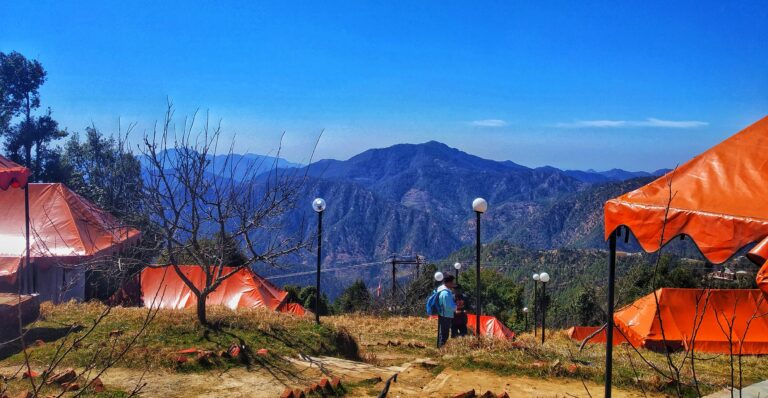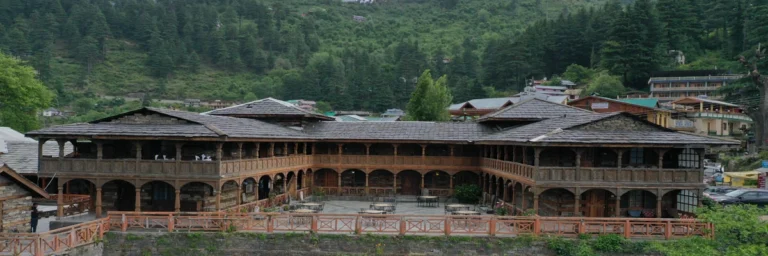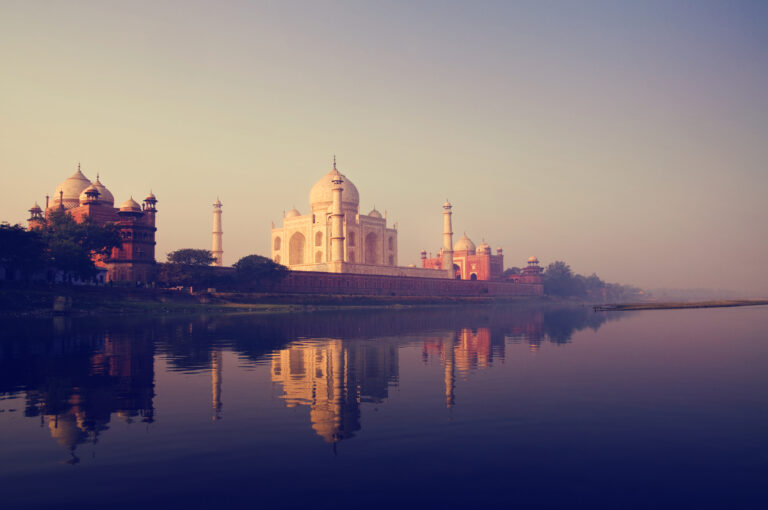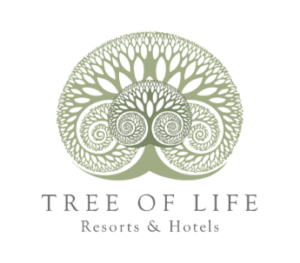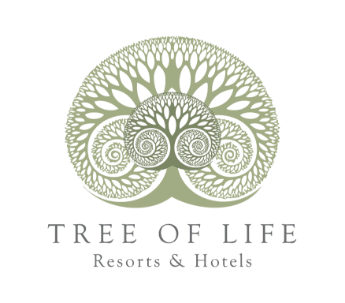Sarnath has been called Mrigadava, Rishipattana, Isipatana, and Migadāya during its long history. Mrigadava, or “deer park,” is the name of the place. Pali Canon’s “Isipatana” translates to “place where holy men (Pali: isi, Sanskrit: rishi) landed.”
The legend goes that some devas came down to announce the birth of the Buddha-to-be to five hundred rishis. Another theory is that Isipatana got its name because sages would land or take off from here on their flights through the air (from the Himalayas). Alms are sought after by Pacceka Buddhas who have spent seven days meditating in the Gandhamdana before bathing in the Anotatta Lake. They make their way to Isipatana via Nandamūlaka-pabbhāra, where they descend to earth as Pacceka Buddhas.
According to Xuanzang’s account, the origin of the Migadāya can be traced back to the Nigrodhamiga Jataka. The Deer Park, according to him, was a forest given by the Jataka king of Benares for the free-roaming of deer. The Migadāya got its name from the fact that deer were allowed to roam the area freely.
The name Sarnath comes from the Sanskrit Srangantha, which translates to “Lord of the Deer” in an old Buddhist story about a Bodhisattva who takes the form of a deer and sacrifices himself to save the life of a king who is about to kill a doe. Awestruck, the king orders the creation of a deer sanctuary in the park. The park is still being used in today’s society.
An important Hindu pilgrimage site, Sarnath lies at the confluence of the Varuna and Ganges rivers in Uttar Pradesh, about 10 kilometres northeast of Varanasi. It was in Sarnath’s Deer Park, where Gautama Buddha first taught the Dharma, that Kondanna (Sanskrit: Kauinya) became the first member of the Buddhist Sangha.
Shreyansanath, the Eleventh Tirthankara of Jainism, was born in Singhpur, a village less than a kilometre away from the site. Pilgrims flock to a temple dedicated to him.
One of the four places of pilgrimage mentioned in the Buddha’s teachings is Isipatana. Buddha’s first sermon after attaining enlightenment referred to as Dhammacakkappavattana Sutta, was delivered at this location, describing the four noble truths and teachings associated with them in detail.
Buddhist commentaries state that the Migadya in Isipatana is where all Buddhas deliver their first sermon. Buddha’s return from Tvatimsa to Sankassa at the gate of Sankassa, is one of the four avijahitatthnni (unchanging spots), the others being bodhi-pallanka, the site of the bed in the Gandhakuti at Jetavana, and of course Sarnath or Isipatana.
It was once known as Isipatana, as it was during the time of Phussa Buddha, Dhammadass Buddha, and Kassapa Buddha, among others. This is where Kassapa was raised and where she was born. However, Isipatana was referred to by a variety of other names most of the time (for these names see under those of the different Buddhas). As a result, it acquired the name Khema-uyyna during the time of Vipass Buddha. All Buddhas travel through the air to Isipatana to deliver their first sermon, according to tradition. In contrast, however, Gautama Buddha walked the entire eighteen leagues to meet Upaka, the Ajivaka, and be of service to him.
Both Indian and foreign Buddhists visit Sarnath as a pilgrimage site. Sarnath is home to temples and monasteries from Thailand, Japan, Tibet, Sri Lanka, and Myanmar, all of which have been built in the style that represents their respective countries. As a result, both pilgrims and tourists can get a taste of Buddhist architecture from around the world. A 24-meter-tall (80-foot-tall) Buddha statue was erected by Indo-Thai workers over the course of 14 years, from 1997 to 2011. The Buddhas of Bamiyan are said to have inspired it.
Archaeological Landmarks to visit in Sarnath
Following is a list of the most significant archaeological sites, organised roughly north-to-south and east-to-west. The Turks damaged or destroyed most of the ancient structures in Sarnath. There are, however, a few distinct features in the ruins:
Kumaradevi, the wife of Gahadavala Govindachandra (c. 1114–1155 CE), built the Dharma Chakra Jina Vihar. This massive vihara was mentioned in an inscription. It mentions Govindachandra’s role in protecting Varanasi from the Turushka gangs. Before it was destroyed, this was Sarnath’s final building project.
While the “Lion Capital of Ashoka” (now on display in a museum in Sarnath) was broken during invasions, the base of the Ashoka Pillar still stands in its original location. The Lion Capital has come to represent India’s modern era. There was a large 32-spoke stone dharma-chakra found broken into many pieces in the Lion Capital that was used as a base of the Lion Capital. In the Supreme Court seal, the Dharma Chakra is shown in its original form.
The ruins of the Mulagandhakuti vihara, where the Buddha spent his first rainy season, are marked by their location. The Ashoka Pillar, which stands at the entrance, served as a reminder that this was the main temple in the area. This is where the famous Sarnath Buddha in pravartana mudra was found.
It is one of the few pre-Ashokan stupas that still stands, but only the foundation is visible. All of the Dharmarajika Stupa was taken to Varanasi in the 18th century and used for construction materials. In the Dharmarajika Stupa, relics (bone fragments) were discovered in a casket. Relics were later thrown into the Ganges river, but their casket is still intact.
The Dhamek Stupa is a towering structure with a circumference of 28 metres (93 feet) and a height of 39 metres (128 feet).
The Chaukhandi Stupa, which dates back to the fifth century or earlier and was later enhanced by the addition of an octagonal tower of Islamic origin, commemorates the location where the Buddha met his first disciples. Restoration has been taking place in recent years.
The Digambar Jain Mandir, despite its 19th-century appearance, occupies an ancient location.
Wall paintings depicting a replica of Sarnath Buddha in dharmachakra pravartana mudra decorate the modern Mulagandhakuti Vihara, built by the Mahabodhi Society in the 1930s. The Deer Park is situated to the north of it (where deer are still to be seen).
A 45-foot drop from the Ashokan Pillar to the museum’s floor, and the Ashokan lion capital miraculously survived to become India’s national emblem and a symbol on the country’s flag. The Buddha image in Dharmachakra posture, one of the most revered in the world, is also on display at the museum.
Anagarika Dharmapala planted a cutting of the Bodhi Tree at Bodh Gaya, which has grown into a Bodhi tree.
In addition to Kushinagar, Bodh Gaya, and Lumbini, Gautama Buddha designated Sarnath (also known as Isipatana) as a place of pilgrimage for Buddhists.
Jainism and Sarnath
Shri Shreyansanatha Bhagwan, the 11th Tirthankara, was born in Sarnath, the site where 4 of the 5 kalyanak (auspicious life events) of Shri Shreyansanatha Bhagwan.
In Singhpuri, Sarnath, there is a Shri Digambar Jain Shreyansnath Mandir
It is where Shri Shreyansnath Bhagwan performed four kalyanaks. Its historic foundation is still visible in the form of a huge ashtakod stoop, measuring 31.4 m (103 feet) in height. It’s thought to be 2200 years old by some people. In Padma-sana, Shri Shreyansnath Bhagwan, 75 cm tall, is the temple’s main deity. This temple’s artwork is unrivalled.

